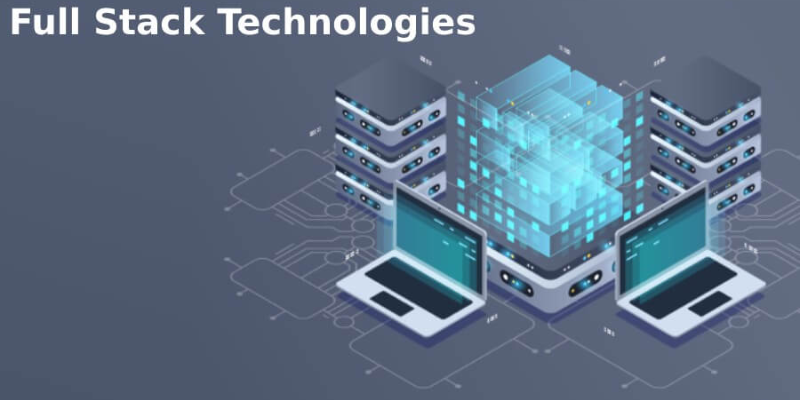In an age where instant communication is key, real-time chat applications have become fundamental to the way we interact, work, and connect. Whether it’s staying in touch with friends, offering customer support, or collaborating within a team, chat apps have transformed how we communicate. For full stack developers, building a real-time chat application is one of the most effective ways to master multiple technologies across the development stack.
This blog explores the entire journey of building a real-time chat app, from frontend to backend, database to real-time communication, giving you a complete overview of what it takes and how full stack technologies work together to deliver seamless user experiences. You can also explore hands-on learning through Full Stack Developer Courses in Bangalore to deepen your understanding and build real-time applications with expert guidance.
The Importance of Real-Time Communication
Real-time applications enable users to exchange data instantly, without the need to refresh the page or perform additional requests. In chat apps, this means messages are sent and received the moment they are typed, providing smooth and uninterrupted communication. The significance of real-time features extends beyond chat into various industries, including gaming, customer service, online education, and social media platforms.
Understanding Full Stack Technologies
To build a fully functional chat application, developers must work with technologies that span both frontend and backend development. The frontend deals with how the user interacts with the app, while the backend processes and manages the data behind the scenes. A full stack developer knows and efficiently combines each of these levels.
The frontend of a chat app is responsible for how users send and receive messages, interact with the interface, and view updates. Developers frequently use modern JavaScript frameworks such as React to create dynamic and responsive user experiences. On the backend, they often choose Node.js with frameworks like Express to handle requests, manage connections, and control the application’s logic.
Designing the User Interface
The success of a chat application largely depends on its usability. A simple and easy user interface guarantees that users may easily send and receive messages. This involves designing a message input area, a display window for ongoing conversations, and visual elements that update in real time without page reloads.
Frontend frameworks like React are ideal for this purpose because they allow for fast updates and reusable components. Full stack developers must also ensure the design is mobile-friendly and accessible across different devices.
This kind of design-focused development is often a core part of the curriculum in the Full Stack Developer Course in Jaipur, where learners are encouraged to create visually engaging applications.
Handling Backend Processes
The backend is the primary engine that drives the chat application. It handles user authentication, message routing, and data processing. One of the most critical backend components for a chat app is the real-time communication layer, which allows data to flow instantly between users. Technologies like WebSockets are used to maintain an open connection between the client and the server.
This continuous connection enables real-time updates without the need to refresh the page, making the app feel live and responsive. Backend frameworks like Express.js make it easier to define routes and manage interactions between the server and the frontend.
Storing and Managing Data
For a chat application, storing messages, user information, and chat history is essential. This is where databases come into play. Developers commonly use MongoDB or SQL-based databases to organize and store data.
The database also helps in managing user authentication, group chats, and chat room assignments. Proper database design ensures that the application runs smoothly, securely, and efficiently, especially when it scales to support many users.
Implementing Real-Time Functionality
Real-time communication is what sets a chat application apart from traditional messaging systems. The core technology that enables this is WebSockets.
When one user sends a message, it is transmitted to the server, which then distributes it to the recipient in real time. This seamless data flow is crucial for creating an interactive and engaging user experience. Developers must also account for connection stability, performance optimization, and error handling during real-time messaging.
This feature is one of the most exciting aspects of full stack development and is explored in depth in hands-on classes like the Full Stack Developer Course in Kochi.
Adding Advanced Features
Once the basic chat application is in place, developers can enhance the user experience by integrating additional features. These may include typing indicators, message timestamps, user status indicators, group chats, multimedia sharing, and push notifications.
These features not only improve functionality but also add layers of complexity that showcase a developer’s technical abilities. They help transform a basic chat application into a professional-grade product that users would expect in commercial platforms.
Building a real-time chat application is one of the best ways to apply and master full stack development skills. It brings together frontend design, backend logic, real-time communication, and database management into one cohesive project. For aspiring developers, it offers an ideal opportunity to put theory into practice, while for seasoned professionals, it’s a great way to demonstrate technical expertise. If you’re looking to gain hands-on experience with such projects, enrolling in a Full Stack Developer Course in Delhi can provide the structured guidance and mentorship needed to succeed.
Also Check: Is Full Stack Development Hard? Insights & Tips!
